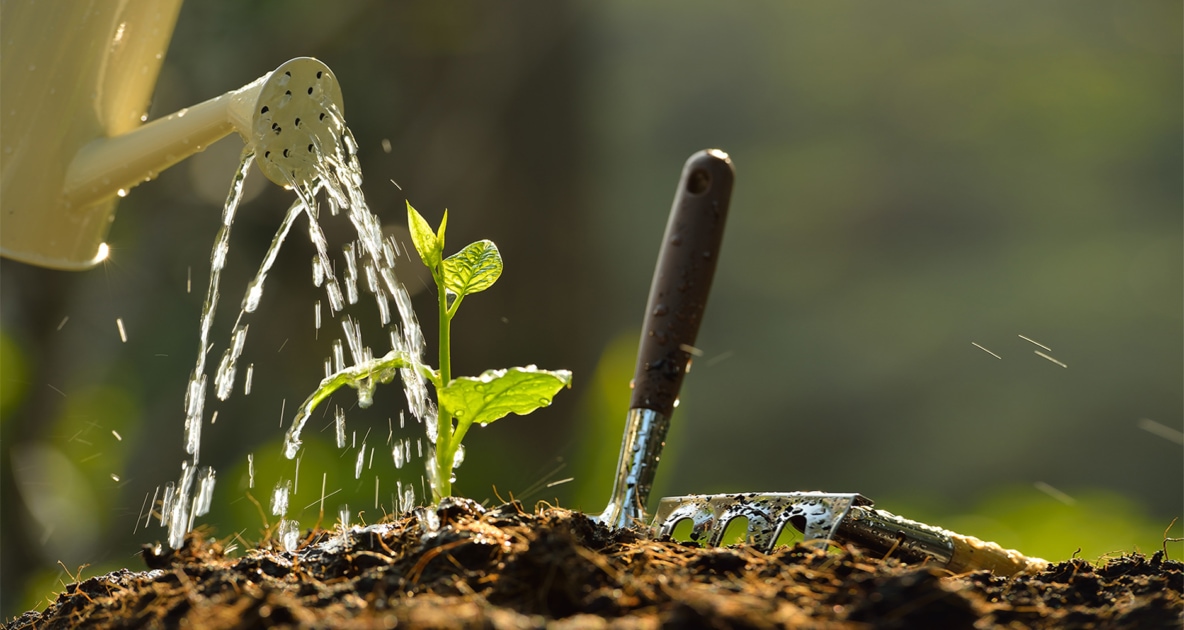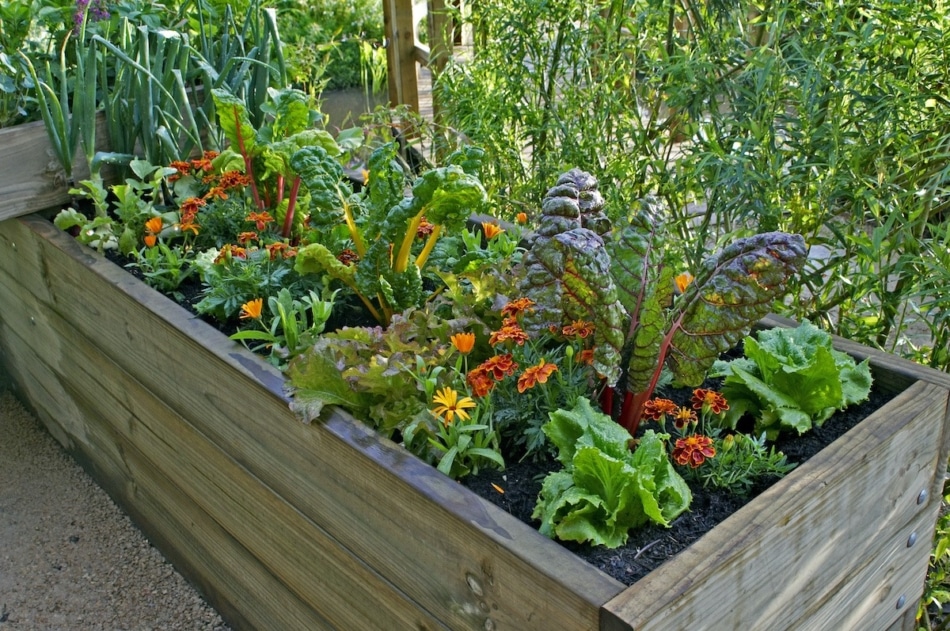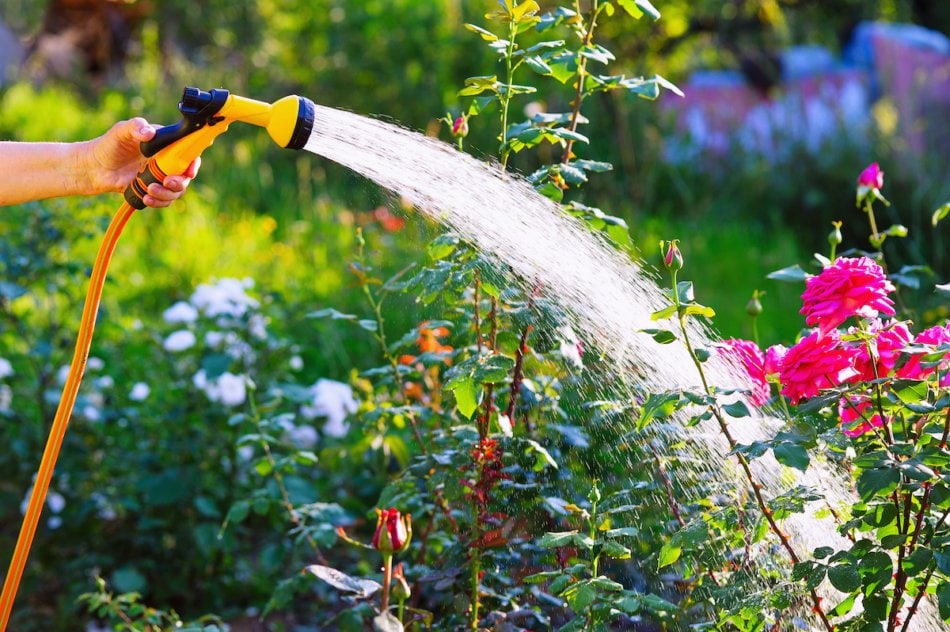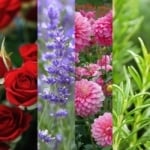Watering Your Garden Wisely During Drought Conditions
Check out these 10 strategies for watering your garden the most effective way, and when it needs it the most!

Water is essential to growing healthy gardens and landscape plants. As the thermometer rises, water usage increases. While watering plants is a basic necessity, we want to trade ineffective, harmful practices for the most effective and efficient ways to raise healthy, hydrated plants.
Whether you’re tending a vegetable garden, landscape plants, herb or flower beds, these 10 strategies will help you conserve water and use it wisely, especially during times of drought or extreme heat.

Finding Water When Water Is Scarce
Recycling Water. Do you have a fishbowl? When changing the water in your fishbowl or tank, instead of pouring the soiled water down the drain use it to water and fertilize your flowering plants. If you have a koi pond, fill your watering can with pond water to water your plants.
Layer Mulch. Adding layers of organic mulch to your garden conserves moisture, reduces weed growth and soil disease, and keeps the soil cooler during the summer. Lay several sheets of newspaper directly on the garden soil around flower and vegetable plantings, as the first layer of mulch. Cover the newspaper with a thick layer of organic mulch in late spring or early summer to help retain moisture in the soil and to reduce the need for frequent watering.
Perennials vs. Annuals. Planting perennials instead of annuals in flower beds not only saves money, time and effort spent planting each year, but it saves water too. Annual botanicals generally have shallow root systems that require lots of watering. Perennials usually have deeper, more developed root systems that require less water than annual flowers.
Water Wisely. Most landscape plants do not need to be watered every day. To encourage the development of deep, healthy root systems in landscape plants, when possible practice deep, infrequent watering instead of daily watering. Excessive watering of young plants deters healthy root system formation. Overwatering stresses plants and stops air from reaching the roots and causes further problems such as susceptibility to pest infestation and disease.
When to Water. Water outdoor plants early in the morning or at night to reduce evaporation loss. Evaporation is most likely to occur at midday and on windy days.

The Best Way to Water
Spraying plants with a garden hose wastes water and does not direct the water where it is needed, to the roots growing beneath the soil. Wetting the foliage increases the chances of disease. A drip irrigation system or a soaker hose are two highly efficient ways to water garden plants. Both methods allow the water to soak into the soil and plant roots – no water wasted. The plant foliage remains dry and healthy.
Garden with Recirculating Water
Aquaponics is a sustainable and extremely efficient way to raise a variety of healthy herbs and vegetables. Its superior recirculating water system will conserve water usage, and eliminate loss. Small aquaponic systems for home growers, and plans to build your own are available online.
Rely on Rainfall
Rainfall should be the main water source for your landscape. Rainfall typically provides adequate water for established trees and shrubs in your yard. Position a rain gauge in your yard to accurately measure the amount of rainfall you’ve received. Check the rain gauge before watering.
Collect Rain Water
Place a water barrel beneath the downspouts of the house to collect rainwater. Use the rainwater in your watering can to directly water the soil and roots of your garden plants and flower beds.
How to Tell When Garden Plants Need Water
Plants looking slightly wilted in the late afternoon sun on a hot summer day is normal. However, if the plant(s) looks wilted in the morning, water right away.
Watering in Extreme Heat
Your plants have a tough time in extreme heat, just like we all do! Keeping your plants hydrated in extremely hot weather conditions is just as important as keeping yourself hydrated.
Be Consistent
While every plant is different and each tolerates heat differently, it’s important to periodically check for clues that your plants need a drink. If you water in the morning but see droopiness around midday, water plants again.
Potted plants on the porch or deck may have to be moved to a shadier spot during certain times of the day.
Don’t wait for the soil around your plants to become cracked and bone dry before watering. A repeated cycle of wilting and hydrating is actually detrimental to some plants. Cucumbers can get bitter-tasting and misshapen, for example.
Going on vacation and need your garden watered? Try this tip!

Deborah Tukua
Deborah Tukua is a natural living, healthy lifestyle writer and author of 7 non-fiction books, including Pearls of Garden Wisdom: Time-Saving Tips and Techniques from a Country Home, Pearls of Country Wisdom: Hints from a Small Town on Keeping Garden and Home, and Naturally Sweet Blender Treats. Tukua has been a writer for the Farmers' Almanac since 2004.






Great article, looking forward to reading more of your other articles on gardening nature plants birds animals and living in the beautiful countryside setting!!!! Thanks
You probably are watering too much. Once a week with a good soaking would be sufficient. Too much water is worse than too little water.
My green bean vines look yellow. I water daily except when it rains am I watering to much.
It might be magnesium deficiency
Not trying to be mean – but water once a week unless you had an inch of rain that week . You’re drowning them .